Fade In: Int. Art Gallery—Day
by Tara Plath
Gestures of Reference
Depictions of art and artists in film and television are almost never flattering, and can often border on making a mockery of the troubled artist, the suave collector, the prim gallerist, the unknowable abstract painting, or romanticized portraiture. But then what to make of the mimicry of mockery? That is what we are faced with in the Swiss Institute’s current exhibition, FADE IN: INT. ART GALLRY – DAY, which brings together a wide array of artists to toy with the idea of art and artifice. The exhibition includes a far ranging collection—from images culled directly from the film sets, to montage video, props, and installations—that takes art on the screen as its primary concern, before fraying into loose tendrils of approach.
The exhibition puts forth a different kind of visual literacy than is usually understood of a gallery or museum: a cinephile’s trivia haven that will leave many grasping for the reference. That tension is somewhat alleviated by an exhibition guide, which includes detailed descriptions of each piece, naming its source material and providing additional images to aid the visitor. Art historical references are replaced by nods to films and TV such as Xanadu (1980, Robert Greenwald), 9½ Weeks (1997, dir. Anne Goursaud), and The X-Files.
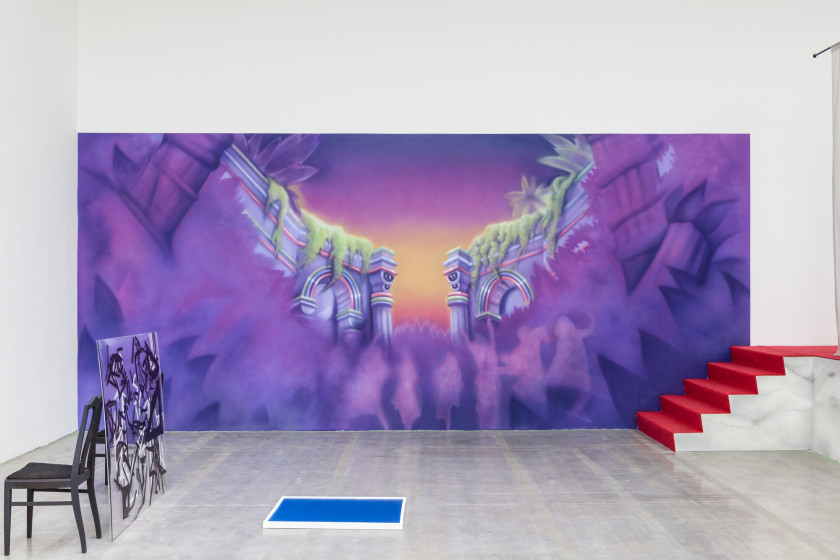
Meanwhile, the press release posits, “an enquiry into whether these fictional depictions in mass media ultimately have greater influence in defining a collective understanding of art that art itself does.”1 For the most part, the works in the exhibition answer the query for us: Absolutely, yes. Not quite art exhibition, not quite wax museum, FADE IN forcibly asserts a dichotomy of understanding: on the one hand it asks an art audience to face and acknowledge the shallowest version of itself—defined by props in the background and character tropes. On the other, it challenges a wider public to consider these props as something more, attempting impossibly to wrest them from their Hollywood context for a deeper consideration, which they may not be deserving of. If when on the screen, works of art are accessible and impactful to the greater public through widely understood cultural connotations (symbols of wealth, excess, highbrow culture, and classicism, or products of psychologically turmoil and indulgent suffering), then—when recreated in the space of the gallery—they are neutered of content beyond their source, serving only to re-establish a base understanding of art as artifice.
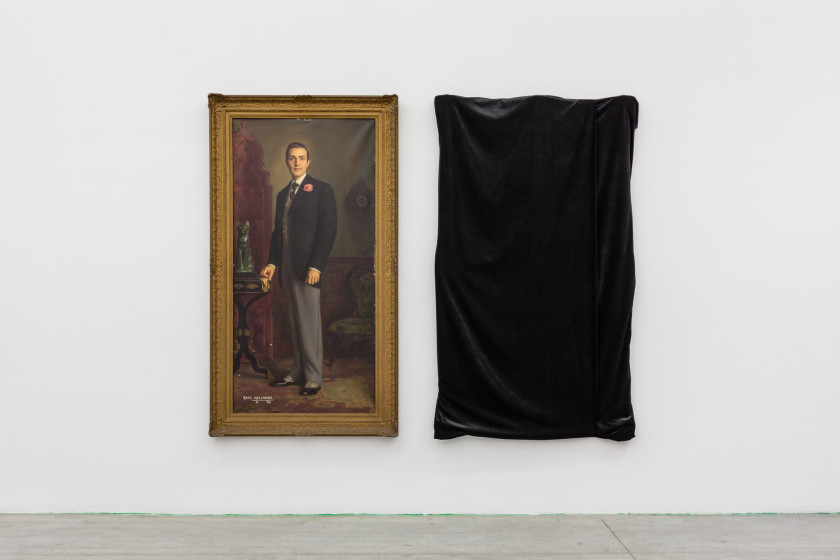
Take for instance Danai Anesidou’s mixed media installation, Vesica iscis: Down with all States, Down with all Churches. Long live this Painter (2016). The work is comprised of artistic motifs from three films, Teorema (1968, dir. Pasolini), Minnie & Moskowitz,2(1971, dir. Cassavettes), and 4 Adventures of Reinette and Mirabelle (1987, dir. Rohmer). In the resulting installation, disparate elements—a loosely drawn eye on the wall, a black fence fastened to the wall with fake leaves and straw hats attached, a pane of glass covered in rigid black and white paint strokes leaning upon two chairs, and a monochromatic blue painting framed in white upon the ground—produce an installation that approaches a critique of superficial depictions of filmic representations of art, but comes dangerously close to imitating contemporary art today. It is a parody of itself, using direct imitation and collage to produce something cool, detached, and all too familiar.
Bifurcating the space is Rodrigo Matheus’ installation, Scene Game (2016). The short wall that splits the levels of the Swiss Institute’s exhibition space is painted like faux marble, while red carpet lines the stairs and edge of the upper space. Along the carpet, semi-transparent curtains and various ambiguous props create a dividing wall. Described in the release as an architectural intervention, the installation serves more as an exhibition way-finding device, than its own entity.
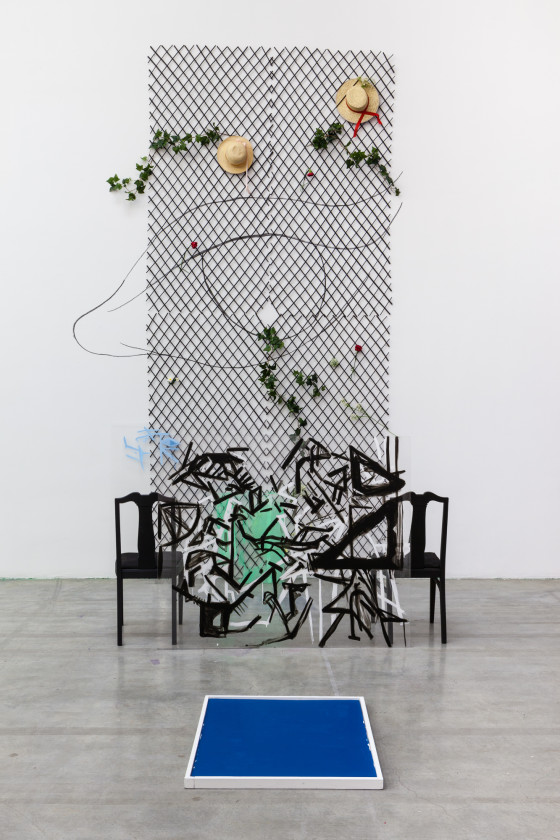
With twenty-five artists included, many of the works get lost in the noise. Various objects and paintings from the GALA Committee, perhaps the most critically engaged with the questions at hand, are easily glossed over in favor of the various videos and installations. Nairy Baghamian avoids the derivative with visual poetics in her wall-hanging sculpture B 75, Mod. NB, Ref. CO, MM (2012)—a re-interpretation of Claes Oldenburg’s tribute to Marilyn Monroe in Ghost Wardrobe (for M.M.).
The exhibition’s blockbuster is Christian Marclay’s Made To Be Destroyed (2016), a super-cut of scenes depicting the rampant destruction of artwork, calling to mind recent news videos of the Islamic State’s current war on antiquities. Included is an extensive shoot out in the Guggenheim Museum in the 2009 film The International, as well as scenes of Jack Nicholson as The Joker in Batman (1989, dir. Tim Burton) massacring an art collection. Made To Be Destroyed reasserts art as a symbol of institutional order and an establishment of value. In mass media, art is threatened by polar dystopias: censorship and confiscation at the hands of an authoritarian government, or destroyed by complete dissolution of the state in the face of terror. In popular representation, the works are understood as “priceless” because of their historical significance, while also inconceivably expensive as evidenced in public market sales; their destruction becomes a symbolic erasure of history, as well as an assertion of a new currency and world order. Down with the artwork comes institutional hegemony; idealism goes up in flames, with only Francis Bacon’s Figure with Meat, 1954 spared by The Joker—a painting that debases the Pope in a butcher shop.
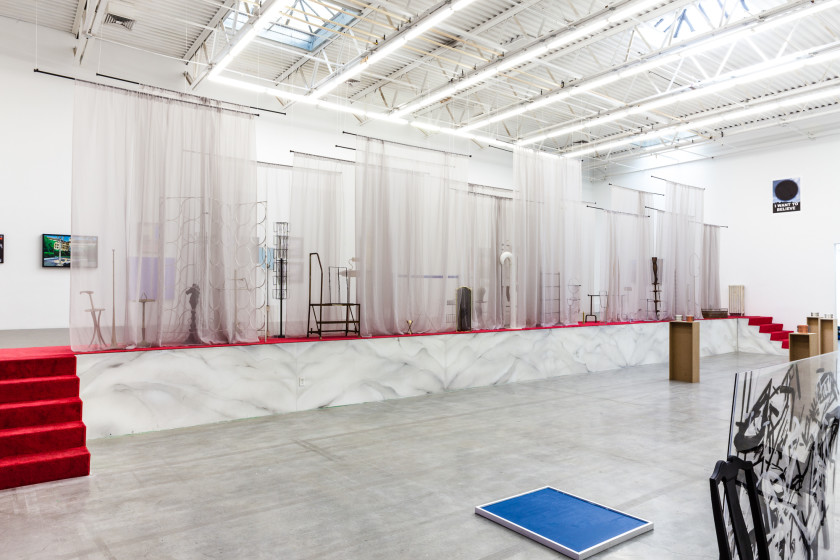
A crowd pleaser, Made To Be Destroyed serves as the final word on the exhibition. As paintings burn and statues tumble, it is not difficult to imaging the audience of the films included reveling in fine art disaster: the media for the masses depicting destruction of elitist artifacts. The ultimate trope put forth is not defined by the image of the artist or the creation of any one artwork, but in the hedonistic witnessing of art’s demise. The bridge FADE IN builds between audiences is one-way: a begrudging acknowledgement that the collective understanding of art has nothing to do with art itself, but with what it symbolizes for those who consume it via film and television. This is by no means an illusion created by Hollywood, but one self-perpetuated by an art world that gorges itself on its own myth and image.
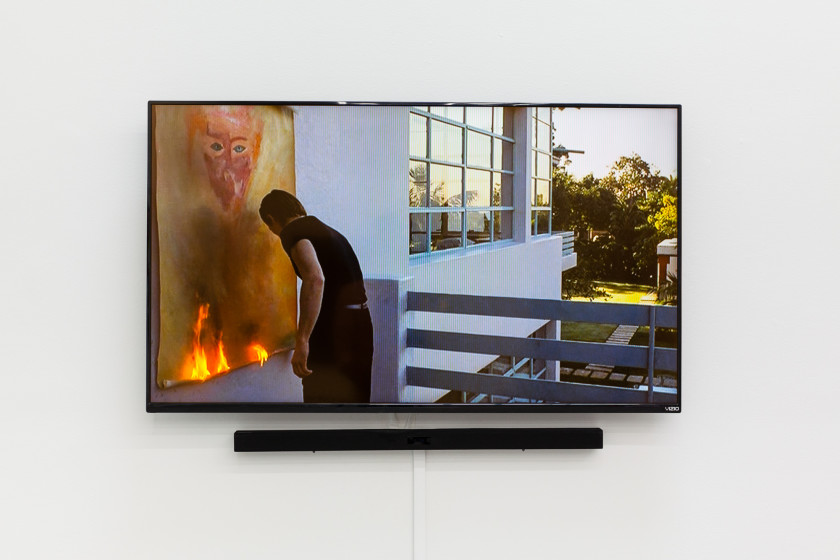
FADE IN: INT. ART GALLRY – DAY is on view at the Swiss Institute through May 19, 2016.